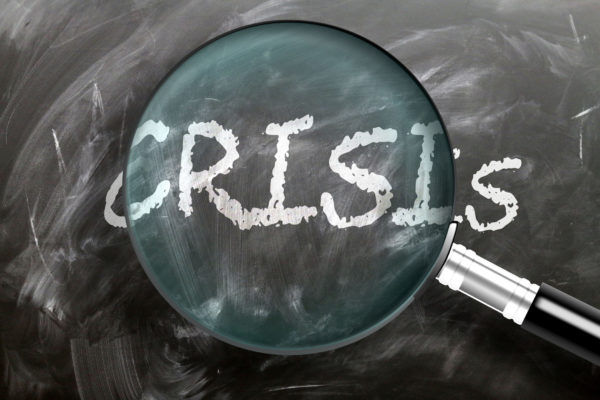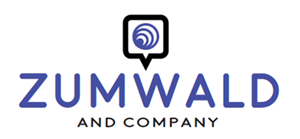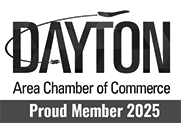Crisis or disruption? You may be using the wrong playbook for leadership communication right now

Should a crisis mindset inform how an organization positions itself through leadership communication to address target audiences during a global pandemic?
An internet search on “COVID-19 crisis” produced 901 million results on Google in half a second this week.
So it’s no wonder that many CEOs and business leaders are viewing COVID-19 through the lens of a crisis and applying crisis communication principles and practices to their leadership communication.
The word “crisis” is prolific on COVID-19 resource pages posted by professional associations and training organizations providing guidance on leadership communication during the pandemic.
A quick scan of a few pages reveals titles with phrases such as:
- COVID-19 “crisis leadership”
- Persuasive messages in “crisis situations”
- Building “crisis resilience”
- Communication that “works in a crisis”
- Managing communications in a “time of crisis”
- Video during “this crisis”
- Measuring “crisis messaging”
But is this the best approach?
Should a crisis mindset inform how an organization positions itself through leadership communication to address target audiences during a global pandemic?
Or should some other playbook for leadership communication be used?

Joe Shields is a principal at ROK Consulting.
I explored this topic with Joe Shields, principal at ROK Consulting, who’s handled many crisis and reputation management gigs over his 30-year career in public relations. Our conversation, captured as a Q&A here, may change your thinking and approach to leadership communication as the world continues to navigate alongside the novel coronavirus and its aftermath.
TERESA ZUMWALD:
Joe, last week I asked if you were being bombarded with crisis communication work in light of COVID-19, and you quickly reminded me that the pandemic – while certainly a devastating event affecting millions of people worldwide – is not a trigger for crisis communication. Can you explain?
JOE SHIELDS:
There’s no question that this pandemic is a bad thing. But when we talk about a crisis as it relates to crisis management and crisis communication, we’re really talking about culpability.
In a crisis, someone – or some organization – has been judged to have done something wrong that is damaging the organization’s credibility. The challenge is to recover and rebuild that organization’s reputation so target audiences come back into the fold.
The pandemic is different. Something happened that was out of your control, and no one is at fault. No one is culpable. It’s a shared experience.
I tell clients, “Don’t look at the pandemic as something you have done. It’s something that has been done to you.”
In a true crisis, when you are judged to be culpable, you’re focused on one thing: trying to rebuild that fundamental trust with your target audiences. You have to convince people that either you weren’t culpable – or that you were culpable and have learned from your mistakes; that you’re sorry; and that you will make changes so the problem never happens again.
TERESA:
What are some examples of crisis situations that call for crisis responses?
JOE:
A product recall is the classic one: You have to fix it operationally, and you have to address how did this happen, should you have known and what are you doing to fix it. That’s what people sometimes miss in a crisis: They’re worried about the TV crew in the parking lot, but they don’t realize you have to fix what has happened so it doesn’t happen again.

When dealing with a crisis situation, it’s crucial to fix what has happened so it doesn’t happen again.
You also need to give the public the opportunity to ask questions, even if everything is covered on your website. That interaction – giving people a chance to talk – is critically important. The messaging you use is a mix between operational necessity and reputation management.
TERESA:
What about a crisis situation where you’re judged as culpable – but in fact, you were not at fault?
JOE:
I once worked with a restaurant owner facing a backlash after someone posted a cellphone video of the police removing a person who is homeless. What the video didn’t show was that person threatening employees and endangering their safety. Plus, no one knew the owner was a huge social justice advocate who regularly fed that person for free.
After the restaurant was judged to be insensitive, we couldn’t let that stand because the restaurant was not at fault.
So we told our story – not a dissertation, but short enough to be consumed: The restaurant’s foremost responsibility is keeping workers safe. And there was a fundamental issue of fairness, since the restaurant had a long history of graciously feeding this person who was homeless.
The public understood safety and fairness. So they returned to the restaurant to eat and show their support. Soon, the story was discussed less on social media. We even received an apology from the loudest voice in the room, which did a lot to mitigate the situation. It was a real win.
TERESA:
Those situations are much different from what we’re seeing today with the pandemic. So why do you think so many people keep talking about the coronavirus and COVID-19 in the context of a crisis that calls for crisis communication?
JOE:
People are trying to give a name to something that virtually no one in our lifetime has experienced before. So it’s natural to use a default word like crisis; it looks great in a headline. But as an organization, the way you communicate about the coronavirus and COVID-19 should not be rooted in the foundation of crisis management and crisis communication because you are not operating from a deficit, and you are not trying to regain trust.
TERESA:

For business leaders and communicators responsible for leadership communication, it may be helpful to think of the novel coronavirus as a disruption and not a crisis.
Makes sense. But if we don’t view the pandemic though the lens of a crisis, how should we view it? What language should we use in our leadership communication?
I recently worked with a senior leader on a keynote speech about business readiness, and we talked a lot about “disruption-proofing” a business.
When it comes to the coronavirus and COVID-19, is disruption a more accurate term than crisis?
JOE:
Yes – and I really like that word disruption because it speaks to the pandemic’s immediate effect on operations at so many businesses worldwide.
TERESA:
So what’s the danger if leaders and their communicators continue to frame the pandemic as a crisis?
JOE:
I think it feeds into this fear – this idea that the world is ending. But that’s not helpful for leaders looking for the right messaging and communicators creating content. If you’re constantly in crisis mode, it wears you out. But if you’re dealing with a disruption, you’re more in control.
By acknowledging that culpability is not in play here, suddenly you have options – a lot of opportunities, really – for dealing with this disruption as leaders and communicators.
TERESA:
More options and opportunities – can you tell us more about that?
JOE:
The other day I was talking to a nationally known senior leader at an organization that really lives its brand. This client by definition is proactive, but she admitted she felt paralyzed because she was not getting the guidance she needed from the state. So we talked about some things that she could do differently to get the results she was looking for. By reframing the coronavirus as a disruption instead of a crisis, you can eliminate the fear and wrestle back control. And that’s important.
TERESA:
So if a crisis communication playbook is limited or not applicable, what playbook should we apply as we navigate through the disruption caused by the pandemic?
JOE:
If you’ve been operating at a frenetic place and feel paralyzed because you’ve been approaching the coronavirus as a crisis, go back to basics.

If you’ve approached the coronavirus as a crisis instead of a disruption, go back to basics: Create a message strategy for COVID-19 that is rooted in your brand and your organization’s overall messaging.
Adopt a brand- and message-based approach by first revisiting your fundamentals:
- What do you do?
- What is your message?
- How do you support that message?
Your organization is a lot more than just the products or services you provide.
Then apply a different prism and ask: What is our message strategy for COVID-19 that is rooted in our brand and in our message?
Suddenly you’ll find your playbook is unlimited, and you have more opportunities. For example:
- How can you demonstrate that you are a citizen of the world?
- That you have the ball and are on top of this disruption?
- That you know what is expected of you and how to accomplish it?
- That you are innovating to improve your audience’s experience with your products or services now that people are more tethered to their computer screens?
TERESA:
That’s definitely a more proactive, in-control approach to this disruption – but I’ve seen some organizations absolutely bombarding their audiences with COVID-19 messaging.
JOE:
I agree with you – some are sending COVID-19 messages just to maintain a presence. That’s a nuisance, and that should stop.
If your organization is doing this, it might be a sign you’re operating in crisis mode, especially if you feel tremendous pressure to always get something out there.
Remember: Just because you say something doesn’t mean somebody hears it.
If what you want to share is not valuable to your audience, you should think twice about sharing it.
TERESA:

Don’t bombard your audiences with messaging. Instead, communicate only when you have new information to share that you believe your audiences will find valuable.
Good rule. So let’s talk about what type of leadership communication right now provides value – and what doesn’t.
JOE:
I get an email from a business organization every day that consists of a laundry list of links. If you are emailing me links to other people’s articles, that is not valuable to me.
Organizations that are doing it right communicate only when they have new information to share that they believe their audiences will find valuable.
Organizations that operate like this demonstrate respect. They understand the communication theory that says, “Communication is good only when it provides value to my audience.”
TERESA:
What about brand? What role does an organization’s brand play in communicating something of value to an audience during a disruption?
JOE:
Whatever you’re communicating, always be guided by your brand, because that’s what gives you a deep well of original content and messaging.
Throughout the pandemic, our local theater has done a great job keeping its traditional audiences engaged by routinely giving them a peek behind the stage curtain – everything from online meet-and-greets with the actors, to virtual lunches with the artistic director, to chats with the stage crew. This theater even promoted and hosted a workshop to help people create their own plays at home.
Contrast that with a restaurant that keeps begging for support online so it doesn’t go out of business. Of course people are empathetic since every restaurant has been struggling – but that message is a weak position and not a great value proposition.
TERESA:
Do you have any more advice about how organizations should approach leadership communication during this disruption?
JOE:
I really believe organizations need to be optimistic, and I’m not saying be Pollyanna.
I’m saying be different from the crowd.
What can you do to bring a little light?
For example, brands that have tapped musicians to bring a little light have demonstrated that it’s possible to communicate with optimism even during a pandemic.
TERESA:
Final question: What should CEOs and business leaders be asking their communication professionals every day if they want to deliver more effective leadership communication?
JOE:
Instead of asking insistently, “What are we doing???” – which is reactive and devoid of thought – leaders instead should ask their communications professionals:
“What should we do?”
And then they should listen to them.

















